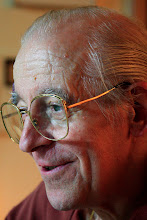Perche’ una fetta di pane imburrato cade sempre a terra con la parte imburrata quando accidentalmente la faccio cadere mentre sto mangiando? Non c’e’ bisogno di lamentarmi di essere sempre e la sola vittima della Legge del Murphy.
Nel 1995, il fisico inglese Robert Matthews (1959- ) dimostrava che la Legge del Murphy va applicata a ognuno di noi senza eccezioni. Quando una fetta di pane imburrato cade da un tavolo alto circa un metro c’e’ una grande possibilita’ che tocchi terra con la faccia imburrata perche’ nella caduta puo’ compiere solo mezzo giro prima di toccare terra. In altre parole, l’altezza del tavolo non e’ sufficiente per far compiere alla fetta di pane un giro completo. Se la stessa fetta dovesse cadere da un tavolo alto due metri, le probabilita’ di toccare terra con la faccia non imburrata aumenterebbero notevolmente. Come riconoscenza per il contributo alla scienza dato da questo esperimento, Matthews riceveva nel 1996 il Premio Ig Nobel per la fisica.
I Premi Ig Nobel sono una parodia dei Premi Nobel. Il nome del premio si basa su una specie di unione del termine inglese ‘ignoble’ (bassezza, debolezza o spregevolezza) e ‘Nobel’, il nome del chimico svedese Alfred Nobel (1833-1893). La pronuncia ufficiale usata durante la cerimonia di premiazione e’ IG-no-BELL, cioe’ non viene mai pronunciato come il termine inglese ‘ignoble’ deve essere pronunciato.
Nel passato Premi Ig Nobel sono stati assegnati nel 1999 per lo sviluppo di un agente chimico che spruzzato su un paio di mutande con tracce di sperma le fa colorare in verde, rilevando cosi’ quando un marito tradisce la moglie. Nel 2006 per una formula in grado di calcolare il numero di tentativi necessari per scattare una foto di gruppo senza soggetti con gli occhi chiusi. Nel 2009 per un esperimento che dimostrava perche’ le vacche producono piu’ latte quando le si da’ un nome.
Ci sono molti altri Premi assegnati per ricerche che fanno ridere la gente. Tuttavia questi premi non devono essere presi troppo alla leggera. Molti di essi rappresentano delle vere e proprie ricerche scientifiche pubblicate da qualificate riviste specializzate. L’Ig Nobel, che viene organizzato annualmente fin dal 1991 dalla rivista di umoristico-scientifica Annals of Improbable Research (Annali di Ricerca Improbabile), mi fa ricordare che la natura prima della scienza e’ divertente.
Lo scrittore americano di fantascienza Isaac Asimov (1920-1992) commentava: “La parola piu’ eccitante che si puo’ sentire in campo scientifico, cioe’ quell, che annuncia nuove scoperte, non e’ ‘Eureka!’ ma ‘e’ divertente’". Interessante e’ il caso del biologo scozzese Alexander Fleming (1881-1955); quando la gente gli chiedeva cosa stesse facendo, rispondeva senza pensarci troppo che stava giocando con i micro-organismi. In realta’ Fleming scopriva la penicellina, un antibiotico che ha del miracoloso, mentre giocava con dei germi.
Il desiderio dei coreani di vedere un loro connazionale vincere un premio Nobel aumenta anno dopo anno. D’altra parte, come il fisico teorico giapponese Toshihide Maskawa (益川 敏英, 1940- ), che nel 2008 vinceva assieme ad un collega il Premio Nobel per la fisica, andava dicendo, il Premio Nobel viene assegnato ad uno scienziato che si diverte nel studiare qualcosa. In altre parole, non e’ giusto assegnare un Nobel come premio per una ricerca academica.
Per concludere, vorrei suggerire ai coreani di cercare di vincere per prima cosa un Premio Ig Nobel. Se ciascun coreano trova divertente studiare la scienza, c’e’ da scommettere che prima o poi riuscira’ a vincere anche un vero Premio Nobel!
28 novembre 2010










